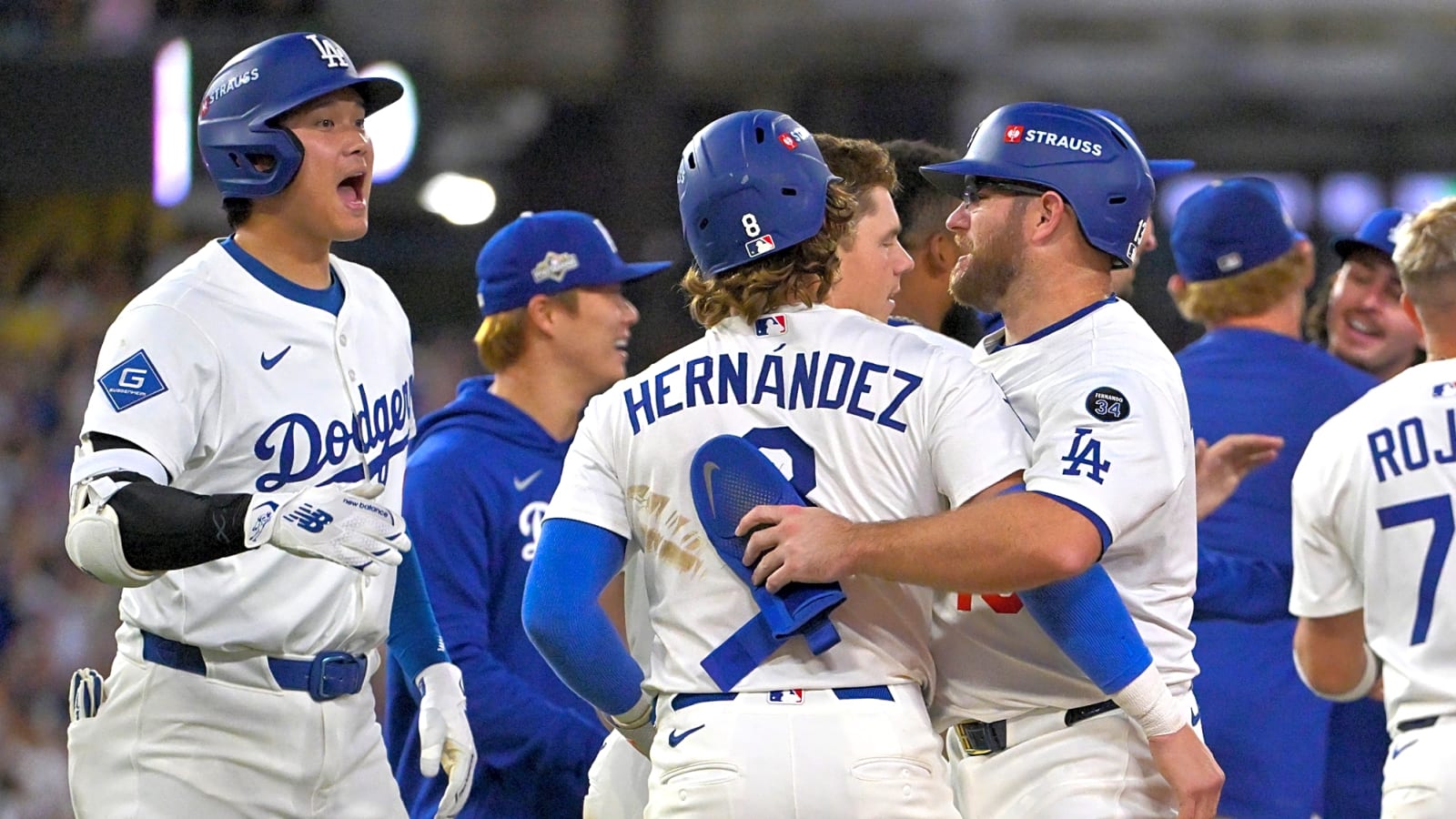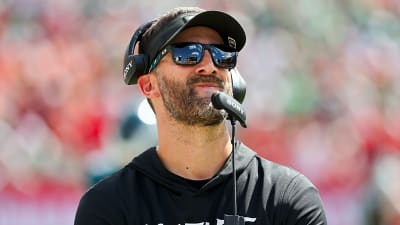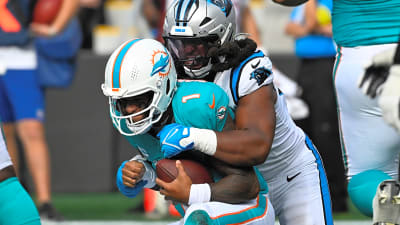
You can’t help but feel for the Philadelphia Phillies. For Orion Kerkering, for Rob Thomson, for that clubhouse that’s been through so many Octobers together. For their fans who lived and died on every pitch in one of the most tightly contested four-game Division Series you’ll ever see.
That Game 4 in Los Angeles was baseball at its most beautiful and, in one brief instant, its most agonizing. The Dodgers and Phillies traded zeros for six innings, traded one run in the seventh, and more zeros until the 11th inning, and then, with two outs and the bases loaded, the game ended on a wild throw. It was the first postseason series in MLB history to end on a walk-off error.
A 24-year-old pitcher, adrenaline surging, mishandled a comebacker and, instead of turning to throw to first, in the heat of the moment, threw home in a panic and his toss sailed wide past Phillies catcher J.T. Realmuto.
Hyeseong Kim sprinted home, and 50,000 people at Dodger Stadium erupted in disbelief. The Dodgers are now headed to their eighth NLCS in 13 years, winning the series 3-1.
For me, that win felt less like a celebration and more like a heavy exhale.
Baseball Can Be Cruel
It’s impossible not to sympathize with Kerkering. One miscue does not define a pitcher, a team, or a season, even when it feels like it does.
The Phillies were right there all night. Their lone Philly run came on a Dodgers miscue when Emmet Sheehan stumbled covering first on a potential double play; Mookie Betts’ perfect feed skipped past Sheehan’s glove and into the dugout, allowing Nick Castellanos to drive on a run with an RBI double in the next at-bat.
In the bottom of the seventh, Jhoan Duran walked in the tying run on a full count with two outs. From there, it became endurance vs. endurance, bullpen against bullpen, and in the 11th, the young Kerkering simply made the kind of error that haunts a career.
As a Dodgers fan, I’ll admit: “I didn’t want to win a baseball game like that.” That may come off as privileged in a way, but it’s honest.
These Phillies played with championship heart, and even after losing Zack Wheeler, they looked every bit like a World Series team (I had them as my pick to win it all this fall).
The Dodgers’ Imperfect Triumph
What makes this series remarkable is that the Dodgers advanced without playing their best baseball. Their series leaders in hits were Mookie Betts (4-for-17) and Max Muncy (4 hits in nine at-bats).
The club that led MLB in home OPS all season scored two runs in both home games and did enough to muster five runs and four runs in the two games at Citizens Bank Park. Shohei Ohtani went 1-for-18 with nine strikeouts; Freddie Freeman was 3-for-15 with no RBIs.
Credit to the Phillies pitching and defense; they made the Dodgers earn everything. Credit also to Los Angeles for finding ways to win.
L.A. leaned on its starting pitching the way last year’s Dodgers never could. Blake Snell’s dominant Game 2 in Philadelphia steadied everything.
Tyler Glasnow’s six-inning, two-hit performance in Game 4 was a masterpiece. Even when Shohei Ohtani and Yoshinobu Yamamoto stumbled with one 3-run inning each in Games 1 and 3, the rotation’s depth carried the series.
That depth has allowed manager Dave Roberts to completely reshape the bullpen, and no adjustment has been more transformative than the emergence of Rōki Sasaki.
Sasaki’s Arrival
The 23-year-old rookie has been thrust into the closer role for his first MLB postseason, and so far, he has answered the bell. Sasaki threw 4.1 innings in the series, allowed just one hit, and struck out three while notching two saves. In Game 4, he went nine up, nine down across the eighth, ninth, and 10th innings, averaging nearly 100 mph with every fastball.
By using starting pitchers in hybrid late-inning roles (Sheehan, Sasaki, Glasnow) the Dodgers have, at least for now, neutralized the bullpen problem that dogged them throughout the year.
A staff that spent months near the bottom of the league in bullpen ERA suddenly looks like it has a workable late-game plan.
Credit Where It’s Due
Still: this series was a survival test. The Phillies pushed the defending champions to the brink, with the kind of grit and pitching depth that makes them as formidable as any team in the sport.
Rob Thomson’s group had opportunities to flip this series at every turn. They took Game 3 behind Ranger Suárez’s brilliance, held late leads in Games 1, 3, and 4, and never stopped pressing even as the Dodgers’ arms held firm.
For the Dodgers, beating a team this good while hitting so poorly tells you something about their fight. It also suggests there’s another gear to find.
Looking Ahead
The Dodgers are moving on, which means they’ve earned another crack at the NL pennant, whether that comes against Milwaukee or Chicago. The path forward will be difficult, and the margin for error in October is microscopic, but they’ll enter the NLCS with their rotation aligned, their bullpen steadied, and their confidence tested.
No one outside Los Angeles may be rooting for them, and that’s fine. The payroll gripes, the winning fatigue, the expectations, it all comes with the territory. But the truth is, building a winner takes more than money. The Yankees and Mets can testify to that.
The Dodgers have mixed development, savvy additions, and locker-room fits that keep the window open. They’re not unbeatable. But they are battle-tested, and they just took out one of baseball’s best without firing on all cylinders.
More must-reads:
- Three areas for Atlanta Braves to focus on during offseason
- Rob Thomson makes another costly decision during NLDS Game 4
- The 'MLB playoff debut strikeouts leaders' quiz
Breaking News
Trending News
Customize Your Newsletter
 +
+
Get the latest news and rumors, customized to your favorite sports and teams. Emailed daily. Always free!








